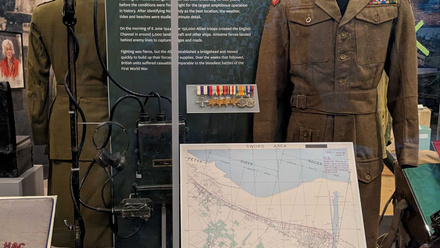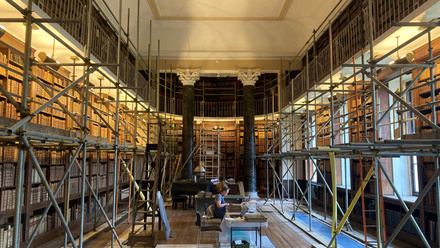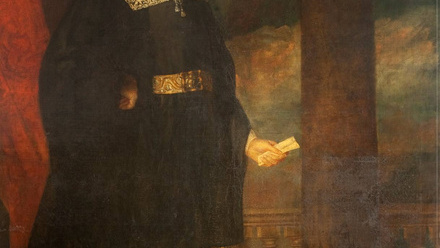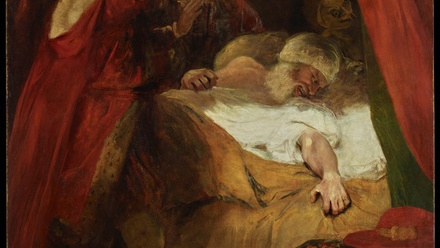And you can find them through our Conservation Register.
The BBC’s Repair Shop show has captured the nation’s imagination, renewing interest in some of the historic items which can be found in homes across the country. But in Icon's new series of articles - The REAL Repair Shop - we’re shining a light on the heritage heroes who work diligently and expertly to conserve and protect these treasures.
Hundreds of dedicated professionals work in a wide network of conservation studios dotted across the UK and beyond to care for the items that matter most to you - everything from national treasures to family heirlooms and collectables. And the conservators working in these specialist studios don’t just make things look good. Conservators take the time to understand the objects they work on and use their professional knowledge to suggest the most appropriate treatment methods to protect and preserve your precious objects for future generations to enjoy.
In our first post, Icon Chair James Grierson talks about getting a neglected pair of portraits inherited from his father restored. Paintings conservator Francis Downing ACR reflects on the work and priorities of conservators:
'Grubby' portraits emerge from the shadows
The client: James Grierson, Icon Chair
In amongst discussions about the importance of caring for our cultural heritage and the nuanced ethical considerations that apply we should remind ourselves of the fun and pleasure to be had when commissioning a conservator to help care for our cherished family heirlooms, or our modest personal collections of antiques, books or ephemera.
In the darkest, forgotten corner of the house I grew up in hung two miniature Dutch portraits dating from about 1800. These were copies of portraits of Van Dyke and Rubens, each little bigger than a postcard, very dark and grubby and in ornate but very battered gilt frames. My father had inherited them from his parents and this was the only reason they’d been kept. It wasn’t obvious that they gave anyone any pleasure and I don’t recall them ever being discussed.
When my parents died I, too, put them in a dark corner where their unloved and dreary appearance acted as a reproach. Knowing paintings conservator Francis Downing ACR through my role at the York Consortium, I eventually asked him to have a look. Francis’s studio behind his house was full of wonderful things and he explained what was involved in cleaning my neglected miniatures, the cost and the fact that his son Giuseppe would also be able to restore the frames.
A few weeks later they were returned to me. To my delight the small, cleaned portraits now emerged from the shadows to greet me properly after all these years. The frames were transformed as things of beauty in themselves.
The portraits now hang a few feet from my desk and give me pleasure every day, not just as familiar objects but also with a sense that, in having had them conserved, I had somehow done right by my late father.
I quite often mention this experience to friends, most of whom probably have something worth conserving but have never commissioned a conservator. I can think of no better way of getting additional pleasure from an object that already means something to you than to see it brought back to life by the skilled hands of a conservator. Conservation is a painstaking process and therefore an investment, but the value of the work far exceeds the cost.
The conservator: Francis Downing ACR
As a conservator in private practice, the primary objective is to be of service to the client or stakeholder, assuring that no artwork is beyond preserving. The responsibility is the preservation of the artwork and aiming to ensure its stability for the future.
After receiving information on its history from the client and following examination, the next step is to discuss the condition of the painting and any recommendations required for its conservation, including costs, which are naturally a consideration.
Ethics are an essential principle in caring for heritage and all discussions and recommendations with the client must be clear, honest, and straight-forward. A Conservator would advise against any remedial work, if they felt that this were the best option for the painting.
The conservator’s priority is the preservation of the artwork and supporting the intentions of the artist.
A painting is created as an illusion. When the painting’s damaged, the illusion is affected, and the eye of the viewer is often drawn away from its intended effect. Repairing areas of damage are intended to return harmony to the picture. A discoloured, darkened varnish and years of grime detract from the intentions of the artist, such as diffusing the effect of its colours and distorting the image.
The real pleasure of our work is doing what is in the interest of the painting, offering a good service to clients and genuinely caring for our heritage.
Icon's Conservation Register
We know that owners of historic objects and heirlooms care deeply about their treasured possessions and want to ensure that they are treated with care and respect. Commissioning an accredited conservation professional is the best way to guarantee that your objects will be in safe hands and will be conserved to appropriate standards. Icon’s Conservation Register provides access to a full and up-to-date list of all Icon Accredited Members (ACRs) and will help you find a conservator that you can trust.






